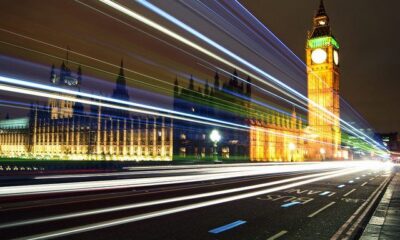

News
2015 General Election: ‘most disproportionate in UK history’
The British voting system has been blasted by the Electoral Reform Society (ERS), who have declared the 2015 election as the “most disproportionate in UK history” and called upon the government to act before more people are driven away from politics.
The ERS analysed how the make-up of the House of Commons would have been had Britain used different voting systems instead of the First Past the Post (FPTP), which has proved controversial with the collapse of the two-party system in Westminster.
It found that under a Single Transferable Vote system – a more proportional system – the Conservatives would have won 276 seats to Labour’s 236, while the SNP would have secured 34, UKIP 54 and the Lib Dems 26.
UKIP received almost 4 million votes across the UK, but only managed to secure one seat, while the Greens were endorsed by 1.2 million of the electorate, also securing just one seat.
Katie Ghose, chief executive of the ERS, described the FPTP system as “archaic” and “divisive”.
“It leaves millions disenfranchised and forces millions more to feel that they have to vote for a ‘lesser evil.’”
“It’s about time we had a fairer system for electing our MPs.”
The election saw David Cameron return to Downing Street with a small majority Conservative government, despite all the polls suggesting a hung parliament.
A report released by the ERS publishes their analysis. It found that: 50% of votes in the election went to losing candidates, while 74% did not contribute to electing an MP; nearly one in ten voters were likely to have voted “tactically”; and that that election saw an MP elected on the lowest vote share in electoral history – 24.5% in South Belfast.
The ERS is campaigning for significant changes to the way elections are conducted in Britain and opts for the Single Transferable Vote system, which is currently used for local elections in Scotland and most elections in Northern Ireland.
The society describes its preferred system:
“It’s quite simple – you rank your candidates. If your first choice doesn’t have enough support to be elected, your second choice is used instead. The candidates with the least votes are eliminated until the 3-5 seats in your area are filled. Not only do seats better reflect how people vote this way, tactical voting is almost eliminated – you don’t have to vote for a ‘lesser evil’ anymore. ‘Safe seats’ become a thing of the past. And every contest becomes just that – a real contest.”
You can read the report, ‘A system in crisis’ by clicking here.
Image: Stefano Brivio via Flickr
Further reading:
The Guide to Sustainable Democracy 2015
#GE 2015: Those who opposed AV only have themselves to blame for election ‘chaos’


 Environment10 months ago
Environment10 months agoAre Polymer Banknotes: an Eco-Friendly Trend or a Groundswell?

 Environment12 months ago
Environment12 months agoEco-Friendly Home Improvements: Top 7 Upgrades for 2025

 Features9 months ago
Features9 months agoEco-Friendly Cryptocurrencies: Sustainable Investment Choices

 Features11 months ago
Features11 months agoEco-Friendly Crypto Traders Must Find the Right Exchange





























